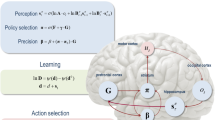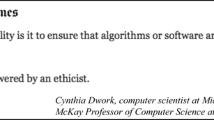Abstract
Recent advances in genetic engineering nowallow the design of programmable biologicalartifacts. Such programming may include usageconstraints that will alter the balance ofownership and control for biotechnologyproducts. Similar changes have been analyzedin the context of digital content managementsystems, and while this previous work is usefulin analyzing issues related to biologicalprogramming, the latter technology presents new conceptual problems that require morecomprehensive evaluation of the interplaybetween law and technologically embeddedvalues. In particular, the ability to embedcontractual terms in technological artifactsnow requires a re-examination of disclosure andconsent in transactions involving such artifacts.
Similar content being viewed by others
References
Keith Aoki. Neocolonialism, Anti-Commons Property, and Biopiracy in the (Not-So-Brave) New World Order of International Intellectual Property Protection. Indiana Journal of Global Legal Studies, 6: 11–58, 1998, p. 54.
Randy E. Barnett. A Consent Theory of Contract. Columbia Law Review, 86: 269–321, 1986.
Dan L. Burk. The Milk-Free Zone: Federal and Local Interests in Regulating Rebombinant BST. Columbia Environmental Law Review, 22(2): 227–317, 1997.
Julie E. Cohen. Copyright and the Jurisprudence of Self-Help. Berkeley Technology Law Journal, 13(3): 1090–1143, 1998.
Julie E. Cohen. Some Reflections on Copyright Management Systems and Laws Designed to Protect Them. Berkeley Technology Law Journal, 12(1): 161–187, 1997.
Julie E. Cohen. Reverse Engineering and the Rise of Electronic Vigilantism: Intellectual Property Implications of ‘Lock-Out’ Programs. Southern California Law Review, 68(5): 1091–1202, 1995.
M.L. Crouch. How the Terminator Terminates: An Explanation for the Non-scientist of a Remarkable Patent for Killing Second Generation Seeds of Crop Plants. Edmonds Institute, 1998. (http://www.bio.indiana.edu/people/terminator.html)
Cruzanv. Director, Missouri Department of Health, 497 U.S. 261 (1990).
Kenneth W. Dam. Self-Help in the Digital Jungle. The Journal of Legal Studies, 28: 393–412, 1999.
Richard Delgado and David R. Millen. God, Galileo, and Government: Toward Constitutional Protection for Scientific Inquiry. Washington Law Review, 53: 349–404, 1978.
Directive 2001/29/EC of the European Parliament and of the Council of 22 May 2001 on the harmonization of certain aspects of copyright and related rights in the information society, 2001 Q.J. (L. 167) 10.
Rebecca Dresser. Ethical and Legal Issues in Patenting New Animal Life. Jurimetrics Journal, 28: 399–435, 1988. United States Congress Office of Technology Assessment. New Developments in Biotechnology: Patenting Life. U.S. Government Printing Office, Washington D.C., 1989, p. 121.
Eisenstadt v. Baird, 405 U.S. 438 (1972).
Niva Elkin-Koren. The Privitazation of Information Policy. Ethics and Information Technology, 2: 201–209, 2000.
Niva Elkin-Koren. A Public-Regarding Approach to Contracting Over Copyrights. In Rochelle Cooper Dreyfuss, Diane Leenheer Zimmerman, and Harry First, editors, Expanding the Boundaries of Intellectual Property: Innovation Policy for the Knowledge Society, pp. 191–221. Oxford University Press, Oxford, 2001.
Ruth Faden and Thomas Beauchamp. A History and Theory of Informed Consent. Oxford University Press, New York, 1986.
E. Allen Farnsworth. Farnsworth on Contracts. §§ 2.11, 4.28, 4.29a, 2000.
Gary L. Francione, Experimentation and the Marketplace Theory of the First Amendment. University of Pennsylvania Law Review, 136: 417–512, 1987.
Harold P. Green, Constitutional Implications of Federal Restrictions on Scientific Researcha nd Communication. UMKC Law Review, 60: 619–643 (1992).
Griswold v. Connecticut, 381 U.S. 479 (1965).
Robert W. Gomulkiewicz and Mary L. Williamson. A Brief Defense of Mass Market Software License Agreements. Rutgers Computer and Technology Law Journal, 22: 335–367, 1996.
Neil D. Hamilton. Legal Issues Shaping Society's Acceptance of Biotechnology and Genetically Modified Organisms. Drake Journal of Agricultural Law, 6: 81–117, 2001. pp. 90-91.
International Convention for the Protection of New Varieties of Plants, Dec. 2. 1961, as revised 33 U.S.T. 2703, 815 U.N.T.S. 89.
Deborah Kemp. Mass Marketed Software: The Legality of the Form License Agreement. Louisiana Law Review, 48: 87–128, 1987.
William M. Landes and Richard A. Posner. An Economic Analysis of Copyright Law. Journal of Legal Studies, 18: 325–363, 1989.
Bruno Latour. Where are the Missing Masses? The Sociology of a Few Mundane Artifacts. In Weibe E. Bijker and John Law, editors, Shaping Technology/Building Society: Studies in Sociotechnical Change pages 225–258. The MIT Press, Cambridge, Massachusetts, 1992.
Mark Lemley. Beyond Preemption: The Law and Policy of Intellectual Property Licensing. California Law Review, 87: 111–172, 1999.
Mark Lemley. Shrinkwraps in Cyberspace. Jurimetrics Journal, 35: 311–323, 1995.
Mark Lemley. Intellectual Property and Shrinkwrap Licenses. Southern California Law Review, 68(5): 1239–1294, 1995.
Lawrence Lessig. Code and Other Laws of Cyberspace, Basic Books, 1999.
Charles R. McManis. The Privatization (or 'shrink-Wrapping') of American Copyright Law. California Law Review, 87: 173–190, 1999.
Michael J. Madison. Legal-Ware: Contract and Copyright in the Digital Age. Fordham Law Review, 67(3): 1025–1143, 1998.
Jerry L. Mashaw and David L. Harfst. The Struggle for Auto Safety. Harvard University Press, 1990.
Robert P. Merges, Intellectual Property in Higher Life Forms: The Patent System and Controversial Technologies. Maryland Law Review 47: 1051–1075, 1988.
David W. Maher. The Shrink-Wrap License: Old Problems in a NewWrapper. Journal of the Copyright Society, 34: 292–312, 1987.
Jeffrie Murphy and Jules Coleman. Philosophy of Law: An Introduction to Juris prudence, 2nd ed. Westview Press, 1990.
Richard Posner. The Ethical and Political Basis of the Efficiency Norm in Common Law Adjudication. Hofstra Law Review, 8: 487–507, 1980.
Richard Posner. Utilitarianism, Economics, and Legal Theory. Journal of Legal Studies, 8: 103–140, 1979.
J.H. Reichman and Jonathan Franklin. Privately Legislated Intellectual Property Rights: Reconciling Freedom of Contract With Public Good Uses of Information. University of Pennsylvania Law Review, 147(4): 875–970, 1999.
Joel Reidenberg. Lex Informatica: The Formulation of Information Policy Rules Through Technology. Texas Law Review, 76: 553–593, 1998.
P.D. Robbins. Retroviral Vectors. In Thomas Blankenstein editor, Gene Therapy, Principles and Applications, page 18. Birkhauser, Basel, 1999.
John A. Robertson, The Scientist's Right to Research: A Constitutional Analysis. California Law Review, 51: 1203–1281, 1977.
Rochin v. California, 342 U.S. 165 (1952).
Roe v. Wade, 410 U.S. 113 (1973).
Skinner v. Oklahoma, 319 U.S. 535 (1942).
Eric Schlachter. The Intellectual Property Reniassance in Cyberspace: Why Copyright Law Could Be Unimportant on the Internet. Berkeley Technology Law Journal, 12(1): 15–52, 1997.
Roy G. Spece, Jr. and Jennifer Weinziel. First Amendment Protection of Experimentation: A Critical Review and Tentative Synthesis/Reconstruction of the Literature. Southern California Interdisciplinary Law Review, 8: 185–228, 1998.
Mark Stefik. Shifting the Possible: How Trusted Systems and Digital Property Rights Challenge Us to Rethink Digital Publishing. Berkeley Technology Law Journal, 12(1): 137–160, 1997.
Stenberg v. Carhart, 120 S.Ct. 2597 (2000).
Carl Schneider. The Practice of Autonomy. Oxford University Press, New York, 1998.
Restatement (Second) of Contracts, §§ 12, 79, 153, 164, 283.
Restatement (Third) of Torts: Products Liability § 2(c). Uniform Commercial Code § 2-316(2).
United States Congress Office of Technology Assessment. A New Technological Era for American Agriculture. U.S. Government Printing Office, Washington D.C., 1992.
United States Congress Office of Technology Assessment. New Developments in Biotechnology: Patenting Life. U.S. Government Printing Office, Washington D.C., 1989, p. 121.
U.S. Patent No. 5,723,765 (Mar. 3 1998).
LeRoy Walters and Julie Gage Palmer. The Ethics of Human Gene Therapy. Oxford University Press, New York, 1997.
Washington v. Glucksberg, 521 U.S. 707 (1997).
Author information
Authors and Affiliations
Rights and permissions
About this article
Cite this article
Burk, D.L. Lex genetica: The law and ethics of programming biological code. Ethics and Information Technology 4, 109–121 (2002). https://doi.org/10.1023/A:1019996311122
Issue Date:
DOI: https://doi.org/10.1023/A:1019996311122




